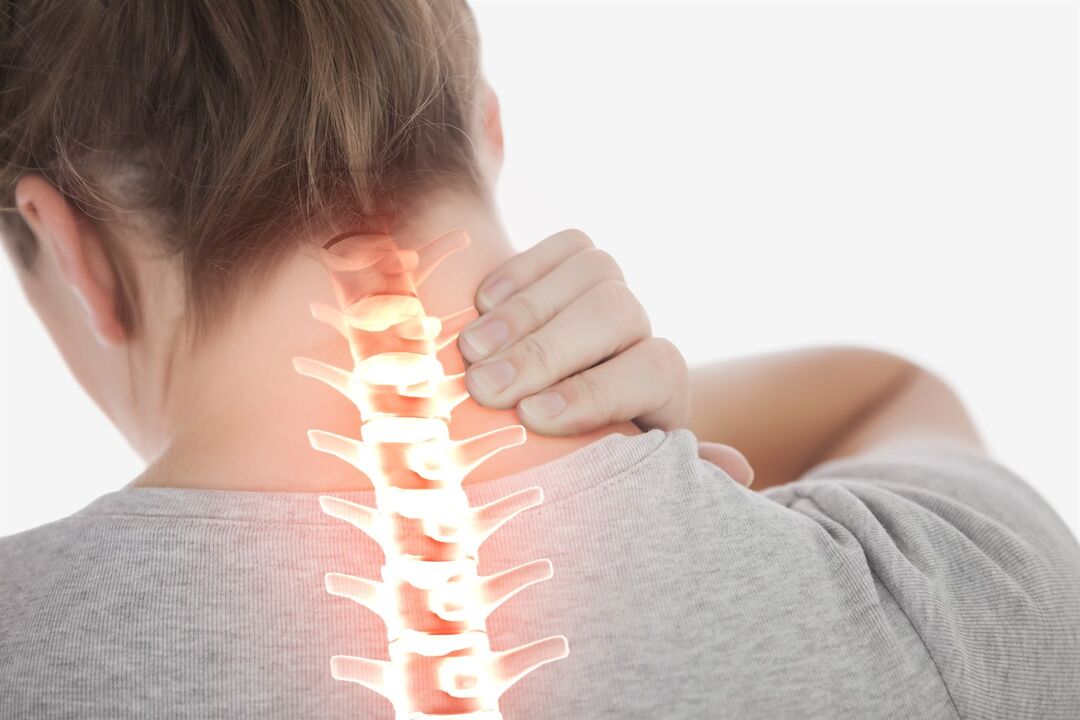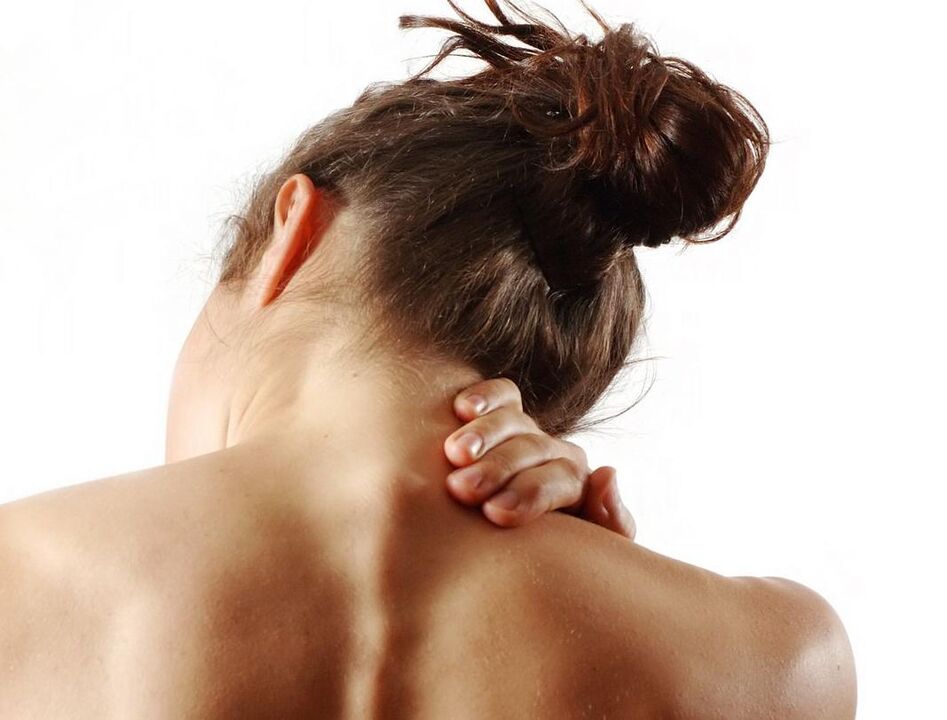What is cervical osteochondosis, how is it expressed? Osteochondrosis of the cervical region is a fairly common pathology that occurs in most cases in the skilled population (from 30 to 60 years). Many people suffer from this disease, often without realizing the cause of the malaise, because the degenerative deviations of this disorder seem unnoticed. What is osteochondrosis of the cervical column and how to treat it?
The osteochondrosis of the cervical vertebra is a degenerative dystrophic damage to the intervertebral discs capable of changing their structure, lending themselves to deformation (discs, joints, vertebrae of the cervical part)). As a result, osteochondosis of the cervical region has fairly pronounced symptoms. The disease intensifies and if treated with osteochondrosis of the cervical vertebra, headache is able to form, a change in blood circulation and an hernia is also possible.
Possible causes and what symptoms with cervical osteochondrosis are seen just below.
The causes of the occurrence of the disease

The main causes of cervical osteochondrosis are a sedentary lifestyle. Pathologies are more susceptible to drivers, employees, lovers to sit near the monitor screens. Due to the constant sedentary image and with a lack of physical effort, they can:
- There are violations of metabolic processes;
- deposit of salts in the liver, kidneys, neck;
- The degree of salts in the lymphatic fluid, as well as the blood flow, increases.
The violations of the vertebrae are caused due to the lack of nutrients of the intervertebral discs. In addition, the possible causes of osteochondosis of the cervical region are unbalanced and wrong nutrition.
The most frequent factors for osteochondosis of the cervical column:
- excess weight, hormonal imbalance;
- strong physical activity, heavy for the human body;
- genetic predisposition;
- constant stress, nervous tension;
- damage to posture (rheumatism, scoliosis, etc. );
- Trauma in the neck of the neck, vertebral column;
- anomalies in the development of neck departments, flat feet;
- hypothermia of the body;
- age -related changes;
- Sporting activity.
Many of the above factors form the load on the vertebrae of the neck, which is why muscle spasm appears. Consequently, circulatory disorders are manifested, metabolic processes decrease and this leads to degenerative deviations. Sometimes, with cervical osteochondrosis, the cause of formation can be a development disorder that is transmitted to bone tissue and nearby vertebrae. It often appears with prolonged physical effort.
If the treatment of cervical osteochondrosis is not carried out in the initial phase, complications in the form of hernia can occur, a protrusion of the intervertebral disc may occur.
Disease development phase
Progress, the osteochondosis of the cervical vertebrae passes some phases classified by various symptoms.
Distinguish 4 phases of the development of the pathology:
- Basically, in the first phase of the disease, there is not the pronounced leveling of the cervical curve (lordosis). The clinical manifestation is insignificant, you cannot observe serious neck pains, exacerbating with head curves and muscle tension. This phase is treated without medicines, the main thing is to change nutrition, do exercises, etc.
- There is instability between the vertebrae, their movement can occur. The patient has more improved pains transmitted behind, to the hands. The height of the discs becomes lower, for this there is a violation of the nerves. The patient feels fatigue, headache, level of work ability, inattention.
- There is a decrease in the height of the intervertebral discs, the narrowing of the holes begins to form an hernia. The pain of the neck and shoulders increases, the muscles of the hands weaken, numb, malaise, dizziness. The diagnosis determines the weak mobility of the neck.
- In 4 phases, the destruction of the disc is observed, they are replaced by the connective tissue. This current is bad for different sections of the ridge that are in different phases of the violation. In people, changes of coordination, pain, dizziness, noise in the ears can occur and so on.
Symptoms
How to determine the osteochondrosis of the cervical column?
It is possible to determine cervical osteochondrosis from clinical signs, symptoms. The disease begins to develop and manifest itself slowly. The symptoms depend on the stage of the disease, the number of compromised vertebrae and the violation of nerve endings.
What are the signs and how to determine cervical osteochondrosis? The main symptom is neck pain, the spine. Only the attending physician is able to establish this diagnosis during the exam, since the different signs of osteochondosis of the cervical column sometimes suggest other diseases.
The most common symptoms of cervical osteochondosis:
- dizziness, head pain;
- the pain of the neck, transmitted in the ears, forearms, shoulders, forehead, neck (with curves, inclination of the head of pain);
- General malaise, fatigue, incorrect coordination is possible;
- Weakness of the hands, numbness;
- Feel, vision, noise in the ears are reduced, the tongue is insensitive, dark in the eyes;
- fainting may occur;
- pain in the heart of the heart;
- hypertension;
- Feeling of cod, creak with inclination in the neck.
The signs of cervical osteochondrosis are not expressed in the same way in which in diseases of other parts of the spine. This is due to the fact that the vertebrae of the neck are near each other, the height of the discs is small. This is able to immerse the complications also with the minimum degenerative disorders.

How does osteochondrosis manifest itself if you have acquired a chronic form? Constant pains, various movements, head slopes are difficult due to the tension of the muscles of the neck, cervical migraines appear. Frequent headaches cause nausea, vomiting, there may be fainting. If the treatment of cervical osteochondosis is not treated in a timely manner, the patient can have pharyngeal symptoms, for example dry fauce, difficult swallowing, tickling, itching in the throat. Such a chronic disease in the future can cause an intervertebral disc hernia.
A common disorder - The symptoms of the treatment of cervical osteochondrosis, which are quite evident, require treatment in its first events. But it is better to use prevention, in particular people with sedentary work or have a genetic predisposition to spinal diseases.
The characteristics of the characteristics of cervical osteochondrosis in men, women are no different. In women 45-60 years, unpleasant pains, numbness, possibly at night, often tingling hands occur.
How to treat cervical osteochondosis
It is worth noting that the symptoms of osteochondosis of the cervical column can develop for years, so it will not work to cure it quickly. However, drugs, ointments, joint products, massages and various exercises, physiotherapy, as well as the nutrition necessary will help to relieve unpleasant sensations and stop the development of the disease.
How to eliminate the manifestations and how to get rid of the osteocondrosis of the cervical region, for this reason it is necessary to trace the following definitions:
- remove inflammation;
- removal of pain;
- normalization of blood circulation;
- Restoration of damaged areas.
Pharmacological treatment
Patients often treat a doctor with this problem and know how to treat osteochondosis of the cervical column, using various medicines and other procedures.
- Anesthesia. But these drugs are sometimes unable to remove severe pain, so the following drugs are used.
- Not stericoidal. These drugs negatively affect the intestine, therefore long use is not recommended.
- Musarelassentes will help reduce muscle spasm.
- Followed by ointments in war, gel, with cervical osteochondrosis, the treatment can be carried out using pepper patch.
- The vitamins of group B normalize metabolic processes in nerve cells.
- Funds that restore the cartilage tissue.
Cervical osteochondrosis with massage can be treated
The successful treatment of osteochondosis of the neck can be massage at home. The massage will help to relax the blocked muscles, reduce tension. The procedure helps to normalize blood circulation in the discs, this facilitates the condition.
You can also make the car -massage with osteochondrosis. It is seated, rubbing the indications in the back of the head. But for the best result, it is better to contact an expert masseur.
Physiotherapy
How to treat cervical osteochondrosis with physiotherapy? The treatment of cervical osteochondosis with physiotherapy includes:
- Ultrasound is an anti -anesthetic anti -anesthetic effect that can increase metabolic processes;
- Laser therapy, due to light action, is administered an anti -inflammatory result complete and also normalizes blood circulation;
- Electrophoresis with medicines, drugs penetrate the right place for electric current;
- Magnetotherapy helps to relieve swelling of tissues and pain.
Healing gymnastics
If the cervical osteochondosis is formed, what to do, what actions to undertake. The healing procedure is performed outside the acute exacerbation of the disease and performed more efficiently during recovery. Therapeutic gymnastics will help forever to get rid of the cervical osteocondrosis. The result of drug therapy does not give any worst and is considered the basis of the treatment.
The exercises will not take much time and you can use the house. Gymnastics focuses on the reduction of pain, relaxation of the neck muscles and the stretching of ligaments. However, you should do exercises by consulting a doctor, so as not to worsen.
Acupuncture

Is it possible to cure osteochondosis of cervical agopuncture? Many people doubt that osteochondosis is treated with this method and are afraid of experimenting. Acupuncture came to east medicine. The Chinese learned to configure energy in the body through metal needles. This method is now recognized as a medicine as an effective technique in case of back and neck.
With the help of the needles, it is possible to get rid of the painful symptoms of the neck and even completely cure.
However, this procedure has some contraindications:
- pregnancy;
- various tumors;
- the presence of infectious pathologies in the patient;
- You cannot spend small and elderly children;
- In blood diseases, the skin.
In any case, with various neck or back diseases, you have to visit a doctor who will tell you exactly how to treat osteochondosis of the cervical column.
How to deal with the cervical osteochondosis of the house
The cervical osteochondosis formed is how to treat at home and is it possible? The symptoms and treatment of the disease are carried out in houses with complex therapy. You can get improvements and remove pain alone if you adhere to a diet and drive the right lifestyle.
In case of illness, the daily diet should include products that contribute to the regeneration of the cartilage tissue, these products are:
- fruit, vegetables, legumes;
- sea fish, flax seeds;
- cottage, milk;
- eggs, walnuts;
- Poultry meat, fish, others.
In addition, how to get rid of cervical osteochondrosis at home are recipes for traditional medicine, therapeutic gymnastics, massages.
Folk recipes:
- The small chopped potatoes are mixed in equal proportions with honey. This mixture is used as a compression 1-2 times a week.
- You can apply a sheet of horseradish around the neck, before this, treat with boiling water, then wrap the neck with a handkerchief.
- Pain symptoms will help to remove heating. Used must, pepper patch, a bag with heated salt, sand, etc.
Patients often look for various methods on how to treat osteochondosis of the neck on sites and other sources. But no forum visitor is able to carefully determine the diagnosis and prescribe therapy. If the cervical osteochondrosis is treated in a particular case and as a specialist should decide by diagnostic.
On the question of what to do with cervical osteochondrosis, it is recommended to use a complex complex of therapeutic procedures: compresses, gymnastics, ointments, injections, healthy and sleep nutrition.



















